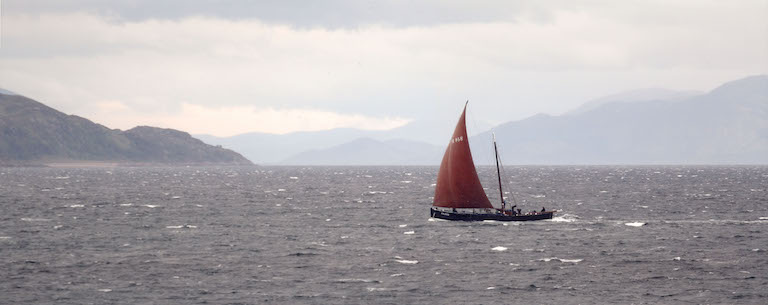Introduction:
The Scottish Fisheries Museum has expanded considerably during its 50 year history. Each property that has been added to the original site overlooking Anstruther harbour has a direct historical link to the fishing industry, whether as former industrial workshops, storehouses or fisher cottages. This assemblage of buildings, of many different ages and architectural styles, thus forms a highly appropriate setting for our Recognised fisheries collections and has a significant impact on the visitor-experience at the museum.
Research on one of these buildings by Dr Robert Prescott of St Andrews University, School of History (in order to protect and re-display an 18th century carved ship stone), revealed that the building is the former storehouse of the Anstruther Whale Fishery Company, established c.1750 during a period of expansion for the Scottish whaling fleets. This revelation directed our attention to our whaling collection, which though relatively small, contains material of considerable interest and has not been fully developed in the past. The realisation that we have in our care a building with such significant connections to the whaling industry encouraged a re-assessment of our approach to the interpretation and display of both the collections and this building, to the benefit of both the research community and the visiting public.
We therefore carried out a full survey of the building, allied to a reassessment of our whaling collection. We also took the opportunity to place the building and our collection in context with reference to other sites and collections around Scotland.

19th century print of a Narwhal
Project Details:
1. The Anstruther Whale Fishery Company Storehouse and Ship Stone
This 18th century stone building has a carved stone depicting a three-masted ship, dated 1757, set into the exterior wall overlooking the harbour. Evidence suggests the stone depicts a whaling ship and commemorates the founding of the Anstruther Whale Fishery Company. The stone is badly weathered and we have obtained listed-building consent to replace it with a new carved replica, displaying the original inside the building. The removal has been successfully completed and the gable repaired, ready for the reinstatement of a replica stone.
We also carried out a full documentary, cartographic and structural survey of the building, covering its diverse uses from the 18th century (the whale fishery storehouse) through to the present (via functions as boat-building premises and eventually a museum gallery) and emphasising its origins in the whaling industry by displaying, in addition to the carved ship-stone, other relevant artefacts from our collections.
2. Review of SFM whaling collections in relation to other Recognised Collections in Scotland
Our collections include photographic, documentary, social history and natural history elements connected to the Scottish whaling industry. Though not extensive, much of this material is of high quality and considerable significance e.g. whaling vessel log-books kept by Anstruther skippers; decorative scrimshaw work; Inuit and sailor-made models; whaling tools and whale-oil and baleen samples. Museum staff, working with Dr R G W Prescott, conducted an audit of this collection and compared it with the Recognised Collections held by Aberdeen Maritime Museum, Aberdeen University, and Dundee City Museums and Archives. We also looked at further material held by Historic Scotland (Trinity House, Leith), and museums in Montrose, Peterhead and St Andrews.
3. Whale remains outwith museums in Scotland
In a previous research project we located a series of whale-jaws utilised as standards along the length of a ropery in Montrose. An ongoing aspect of the project is the compilation of a gazetteer of whale-jaw arches sited elsewhere in Scotland. These decorative devices had their origins in the extremely practical process of extracting whale oil by gravity drainage from the spongy bone of the jaws on the homeward voyage from the whaling grounds. Several have been identified and our ongoing aim is to record these and any others.

19th century print of a Dolphin
Project Outcomes
- New displays
- Conservation of ship stone
- Gazetteer of whale-jaw arches
- Publication of research
- Improved knowledge of buildings and Recognised collections
- Improved context in relation to other museums
- Increased public awareness of whaling collections























